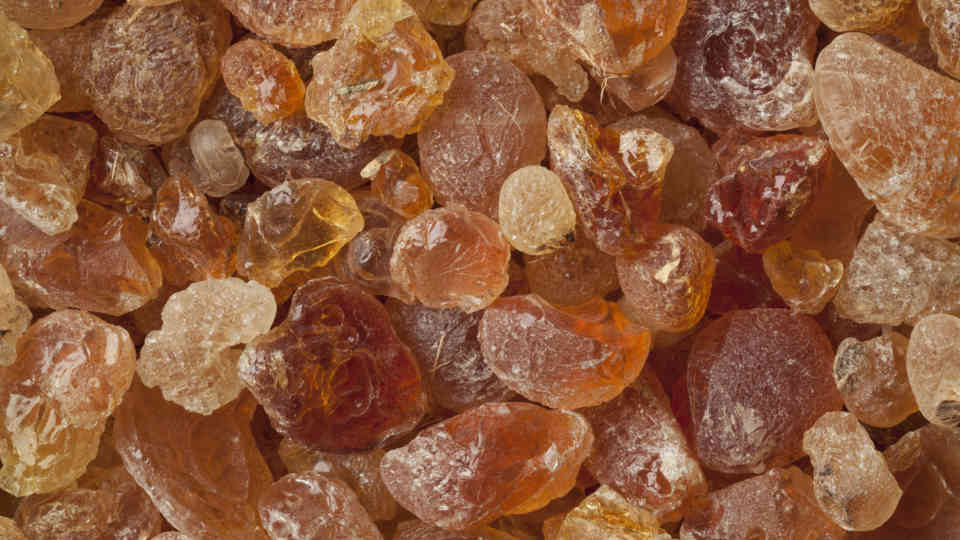
• To generate US$476.1m by 2025
Gum Arabic, a leguminous tree species that is well adapted to Sudan and Sahelian agro-ecology of Africa, is capable of generating foreign exchange for Nigeria and Africa if its production and processing are optimized.
The Raw Material Research and Development Council (RMRDC) said this while forcasting that the global revenue to be generated from its production and industrialization would reach US$476.1million by 2025.
This was disclosed to The Guardian in a document made available by the Director General of RMRDC, Prof. Hussain Doko Ibrahim.
In Nigeria, the plant grows in areas with rainfall range between 250-1000mm with temperatures between 20-400C. However, Acacia spp such as Acacia dudgeoni, Acacia gourmaensis and some species of Acacia sieberain are also found in Osun and Oyo States.
“Gum arabic has several industrial, social and other uses. It is used in the food and beverages, pharmaceuticals, paper, adhesives, paint and textiles industries.
“Globally, Gum Arabic is used as a stabiliser, a binder, an emulsifier or a viscosity-increasing agent. The addition of five per cent gum Arabic to 10 per cent sugar and protein in gelatinous mix derived from amino acid is used to bind expendable foundry cores for casting in USA and in the hot box production in the United Kingdom,” he said.
To underscore the economic importance, the RMRDC boss said the global Gum Arabic shortages in 1973–1974 and 1984–1985 led many companies to develop alternative formulations involving other hydrocolloids, such as starches or pectins, for partial or total replacement of the Gum, but as of now, no artificial or synthetic substitute has been found that can match Gum Arabic extraordinary foam forming and emulsifying quality.
In the United States, non-dietetic hard and gummy candy makers nearly completely eliminated the use of Gum Arabic in the second half the 1980s, in favour of readily available, less costly and only slightly underperforming starches.
In confectionary coatings, the switch was only temporary, as manufacturer’s readopted Gum Arabic after starch reformulations proved inferior in quality. In the wine industry of the United Kingdom and Northern Ireland, Gum Arabic was found to produce a clarity that could not be matched by other hydrocolloids, in addition to providing a controlled flavour release.
The global industry analysis and forecast, 2017-2025, indicated that market, which now worth nearly US$400million, will expand steadily at 5.4 per cent CAGR. This is due to preference of naturally derived gum in food and beverage industry, the growing application of the gum as tablet binders, film forming and suspending agents in the production of pharmaceuticals coupled with the effective application of gum Arabic in paper manufacturing, meat processing, textiles and processing of vegetable juices, etc.
“This shows the need for African countries to engage more in the exportation of processed Gum Arabic products. This is necessary to boost their foreign exchange generation capacities, more importantly, as Gum Arabic utilization is expanding globally,” the DG said.
According to the Global Newswire, 2018, research indicated that towards the end of 2025, over 165,000 tonnes of Gum Arabic will be consumed in the world, bringing in an estimated US$476.1million in revenue by the end of 2025.
In view of its wide production in Nigeria, experts believe that the country can become the world leading producer and exporter.
As at today, Nigeria is the largest producer of Gum Arabic in West Africa, and third largest world producer and exporter after Sudan and Chad. The major producing areas include Borno, Yobe, Jigawa, Bauchi, Adamawa, Kebbi, Gombe, Pleateau, Katsina and Zamfara.
The largest amount of grade I is produced in the Borno, Yobe and Jigawa States. The best type of grade II is from Plateau and Bauchi, while the best of grade III is from Bauchi State.
The council said considering the high economic potential of Gum Arabic, thegGovernment of Federal Government had deliberately attempted to boost the production of Gum Arabic.
Major problems militating against optimal production and processing of Gum Arabic in Nigeria include low market margin and efficiency of production, lack of processing facilities, adulteration of grades which results to poor domestic and international prices and poor marketing information.
Others include inadequate finance and transportation problems as most rural markets are either not motorable or were in bad conditions.
To address this challenge, the council has been promoting plantation establishment of Gum Arabic in Nigeria. In the early 1990’s, the council promoted the establishment of a plantation of Gum Arabic in Maiduguri through the provision of improved planting materials to a number of private sector operatives among which is Alhaji Mohammed Kurama in Maiduguri and the University of Maiduguri, under its plantation establishment of indigenous economic wood species programme.
The council is also providing support for increased value addition and quality assurance with a view to creating market and employment along the value chain by organizing investors on Gum Arabic production and processing locally.






